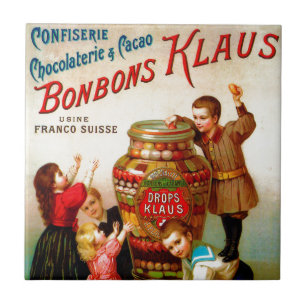Cooking & Baking
Showing Original Post only (View all)'A Cultural History of Sugar: From Status Symbol to Sweet Poison' [View all]
'From status symbol to sweet poison: A cultural history of sugar.' How did pies become cakes and what do pharmacists have to do with candy? A new exhibition explores the rise and fall of the reputation of this omnipresent ingredient. DW/Deutsche Welle, July 29, 2019.
Sweets for the kids, chocolate for heartbreak, ice cream during lunch break: We love sugar in every form — and the industry loves it too. Whether in bread, baby food, yogurt or sauces, sugar is present in just about everything we eat. The average German consumes more than 30 kilos (66 pounds) of the white crystal a year. The times when possessing it was a sign of wealth and power are most certainly over; today it's notorious as something bad for our health and that makes us gain weight.

In the beginning there was fruit: Like almost everything else, sugar had to come to Europe before the craving could be developed there. But how did Europeans satisfy their desire for sweet treats before merchants brought sugar to the continent? Two thousand years ago, fruit was the only source of sweetness. The Romans started growing it in Germany, and from then on, a wide variety of fruits, from apples and pears to plums and grapes, continued to be planted. The extracted and preserved fruit juice was processed into mush or jelly.
"It was durable and could be used to sweeten food," explains Carl Pause, an archaeologist who curated the exhibition "Sweet stuff: Snacking in Neuss" at the Clemens Sels Museum in the German city of Neuss, located next to Düsseldorf.
The extraction of sugar from sugar cane began in the early Middle Ages, imported to Europe from the Middle East. However, it was too expensive for the general population, says Pause. Even the nobility could only afford it for special occasions. Legend has it that the name of the famous candy, bonbon, originated at these very festivals. After testing the sugar mixture for the first time, French royal children were said to have replied enthusiastically, "Bon! Bon! (French for 'good'), giving the candy its name.

- Cane sugar came to Europe from the Middle East and was very expensive.
The sweet revolution: In the 18th century, the British began to cultivate sugar cane in their colonies, producing sugar in large quantities. France led a war against Britain under Emperor Napoleon who "wanted to prevent the British from doing business," says Pause. Thus, the so-called Continental Blockade put a stop to sugar imports. The war was long over and Napoleon dead for years when sugar beet finally made it to Germany in the middle of the 19th century. From then on, sugar was available to everyone and — above all — affordable.
A source of energy: Today, an excess of sugar is regarded as "white poison" and linked to numerous diseases. This makes it all the more surprising that since ancient times, it was found where it might be least expected: in pharmacies.

- Medicine bottles. Sugar was said to have healing properties and was once used in medicines available at pharmacies.
As early as the first century A.D., sugar was said to have healing properties. In the 12th century, drugs called "sine confectiones" consisted of 90 percent sugar. Five hundred years later, however, pharmacists used sugar in medicines mainly for preserving and correcting the bitter taste and as a source of energy. The sweet medicine sold well. Eventually, in order to boost sales, pharmacists simply left out the active medical ingredients, selling only the sweet food — and the confectionery was born.
> German specialty, Black Forest Cake, https://www.dw.com/en/german-specialty-black-forest-cake/a-38879304

- Black forest cherry cake is one of the most popular cakes in Germany.
How pies became cakes: After the confection left the pharmacy, it did not take long for the range of sweets to widen. Cake was one sweet treat that eventually became popular. With its airy sponge cake base, sweet cream and plenty of cherries, the Black Forest cherry cake became one of the most popular cakes in Germany.
Although it celebrated its 100th birthday in 2015, the forerunners of this baked product existed as far back as the 16th century. However, the cakes of that time did not have much to do with our current understanding of what form the Black Forest cake takes. Several hundred years ago, they looked quite different....
More, https://www.dw.com/en/from-status-symbol-to-sweet-poison-a-cultural-history-of-sugar/a-49789645
